Here We Are Now
In which we overcome many of the Ocean's great challenges and eat as much mercury as possible
After a year of being blown by the wind we’ve managed to sail all the way across the Pacific Ocean. Captain’s log: it. is. big.

Since my last update, back in the 1800’s, we sailed from Mexico to the Marquesas Islands, a distance of some 3,000 miles all at once. But that was just the beginning; next we sailed to the Tuamotus (the dangerous isles), and the Societies (the stereotype of paradise). Then to Tonga, which had previously been a mystery to me, and then to Fiji, which I first learned of in the 1990’s when Chandler Bing fled there, but which I didn’t know at the time was a real place until I tried their water. Then we sailed to New Zealand, which is easy to say but much harder to actually do. We bought this boat on a whim and then kept choosing the harder option until we wound up here. And here we are now. How about that?
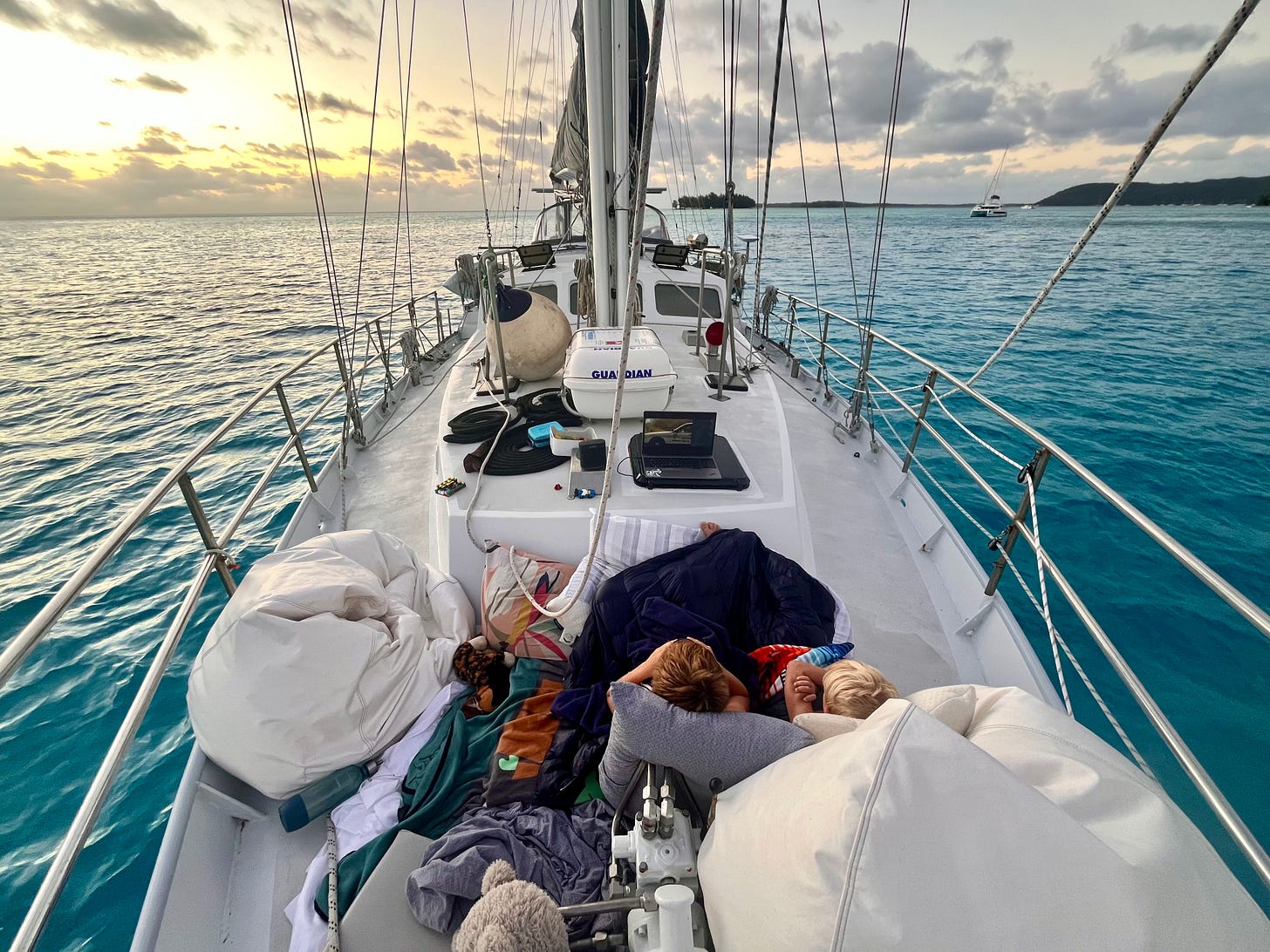
When we last spoke (1800’s) our boom had snapped in half and we were forced to return to Cabo San Lucas, the worst Mexico has to offer. But there, as everywhere, we met the best people, the people who pop out of the woodwork whenever something goes wrong to make us whole again and get us going on our way against all odds and in record time. Pam and Adriana saved us this time, both fixers in their own way. Pam knew everyone and called us back even when we didn’t call first, anticipated every need, cared. A fixer. Adriana owns a welding shop and she was on the case before we even made it back to Cabo. She was on the scene, on the job, worked the weekend, got it welded. Fixer. Adriana still texts me to check in. Remy and Quinn drew sea-themed pictures for Pam, who hung them on her office wall, and which, ten months later, still welcome visitors to the Cabo Yacht Center. “They were some kids with a broken boom. They’re far away now.”
We left Cabo again with Sven as our crew and sailed three thousand uninterrupted miles at the speed of a middle school kid chasing a school bus, one after another, and not as advertised. The glossy brochures promised that we would set our sails when we left Mexico and maybe touch them once in three weeks as the trade winds delivered us to the mysterious Marquesas Islands of French Polynesia. But it was f*$%ing hard. It was rough and uncomfortable, four or five sail changes per day, sometimes five in a single night shift where we couldn’t see a damn thing, maybe a squall here and there for good measure. The boat pitched and bucked like a psychotic cradle and we had no place to go to escape. Then it rained and it wouldn’t stop and everything became wet, inside and out. Musty, moldy, nothing dries. Of the 19-day crossing the final two days were quite pleasant. Trade winds finally set in. We did manage a nice calm day in the doldrums to go swimming in 16,000-foot-deep water. So that was something.
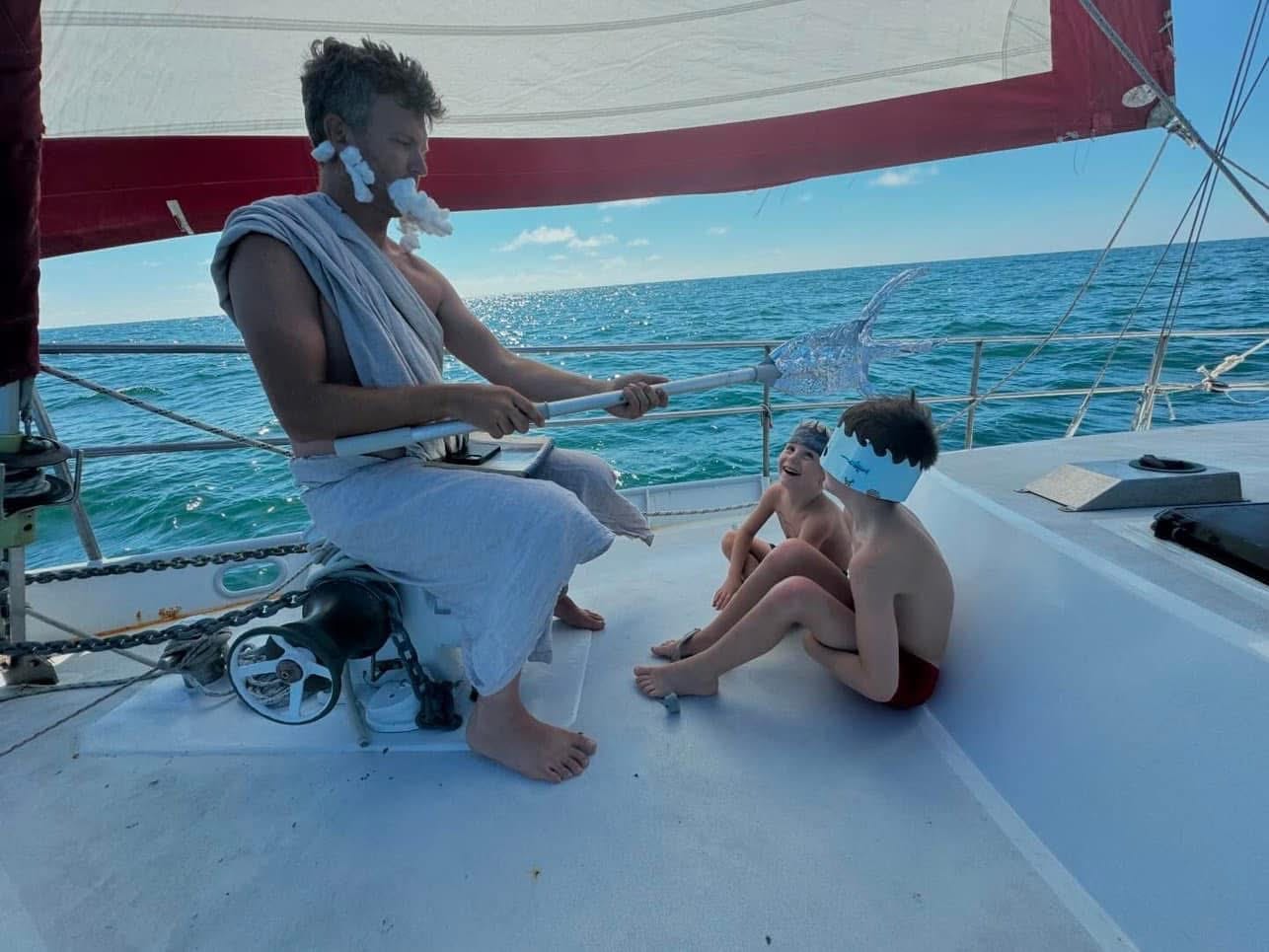
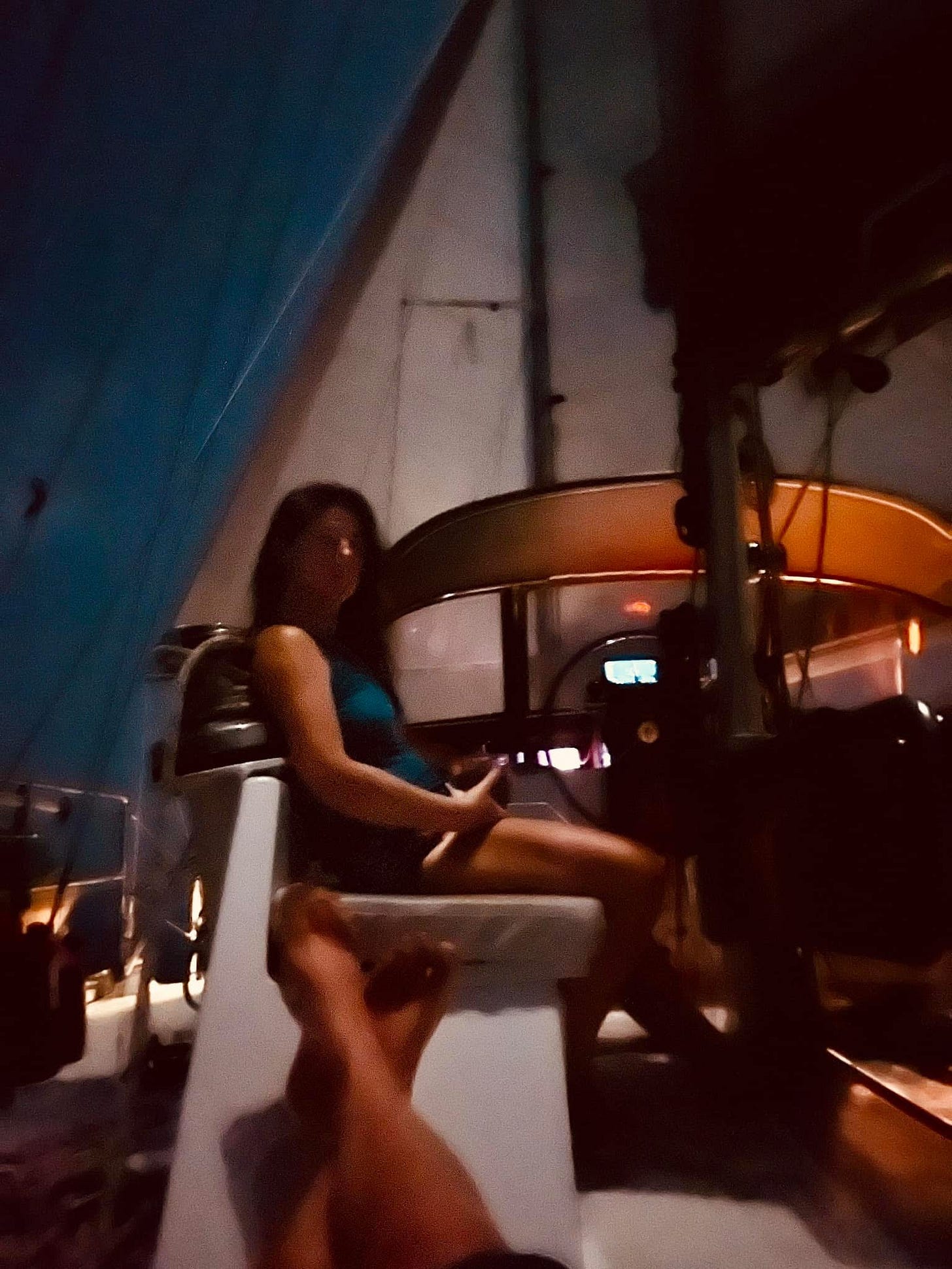

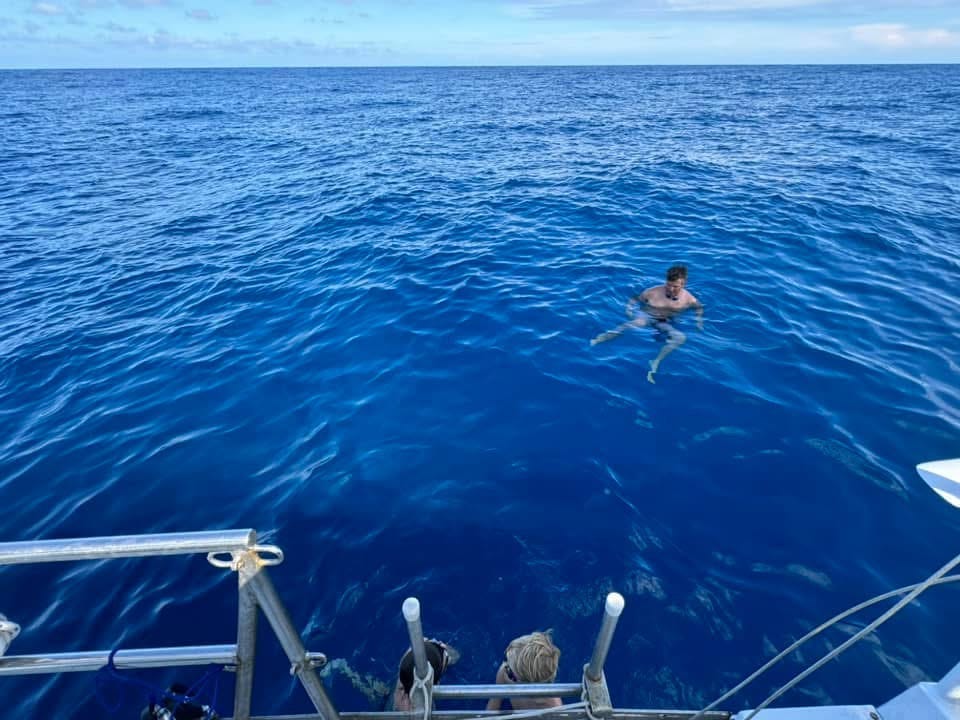
We parked the boat in the ocean by heaving-to for the final night just off shore from Hiva Oa where the smell of the islands punched us in the face like boxing gloves of potting soil and hibiscus. There’s nothing to smell on the ocean and that reintroduction of the sense of smell can bring a grown man to tears. If I appeared a brave and unflappable explorer on the outside (probably did), I was certainly weeping like a baby on the inside when I smelled those little flowers. And when we delivered Sven to a passing yacht to commence his return journey to Sweden? Don’t get me started. But if anyone asks, I’m a pretty tough guy.
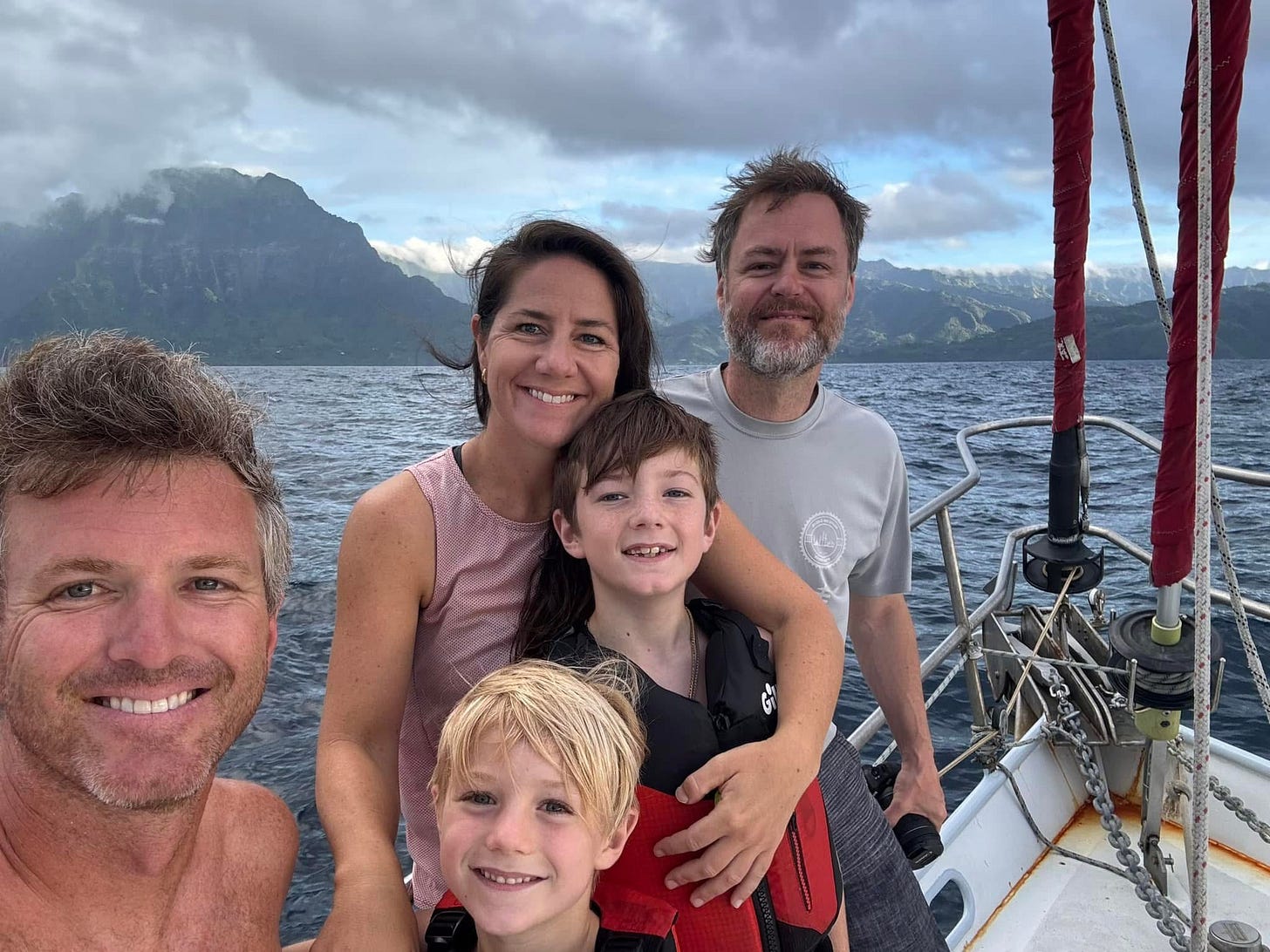
Fatu Hiva and its Bay of Virgins was the most stunning and unbelievable, otherworldly place imaginable. How can such a place exist on this earth? Black spires of igneous rock rise above a perfect bay, each surrounded by palms and studded with white goats, in the remotest corner of the planet and nobody is around, save for the few villagers who somehow live there. There’s almost no way to get there; you have to really, really want it. The forgotten corner of the earth. The wind blows like Satan’s breath and as we left after a week’s rest we were tormented by repeated 40-knot katabatic gusts and we dared not raise our sails for the first hour until we were well clear of the island. Then the giant fish stormed us and bent our rods double and broke our lines. It’s a place to go before you die, a requisite thing to see as a part of a complete life.
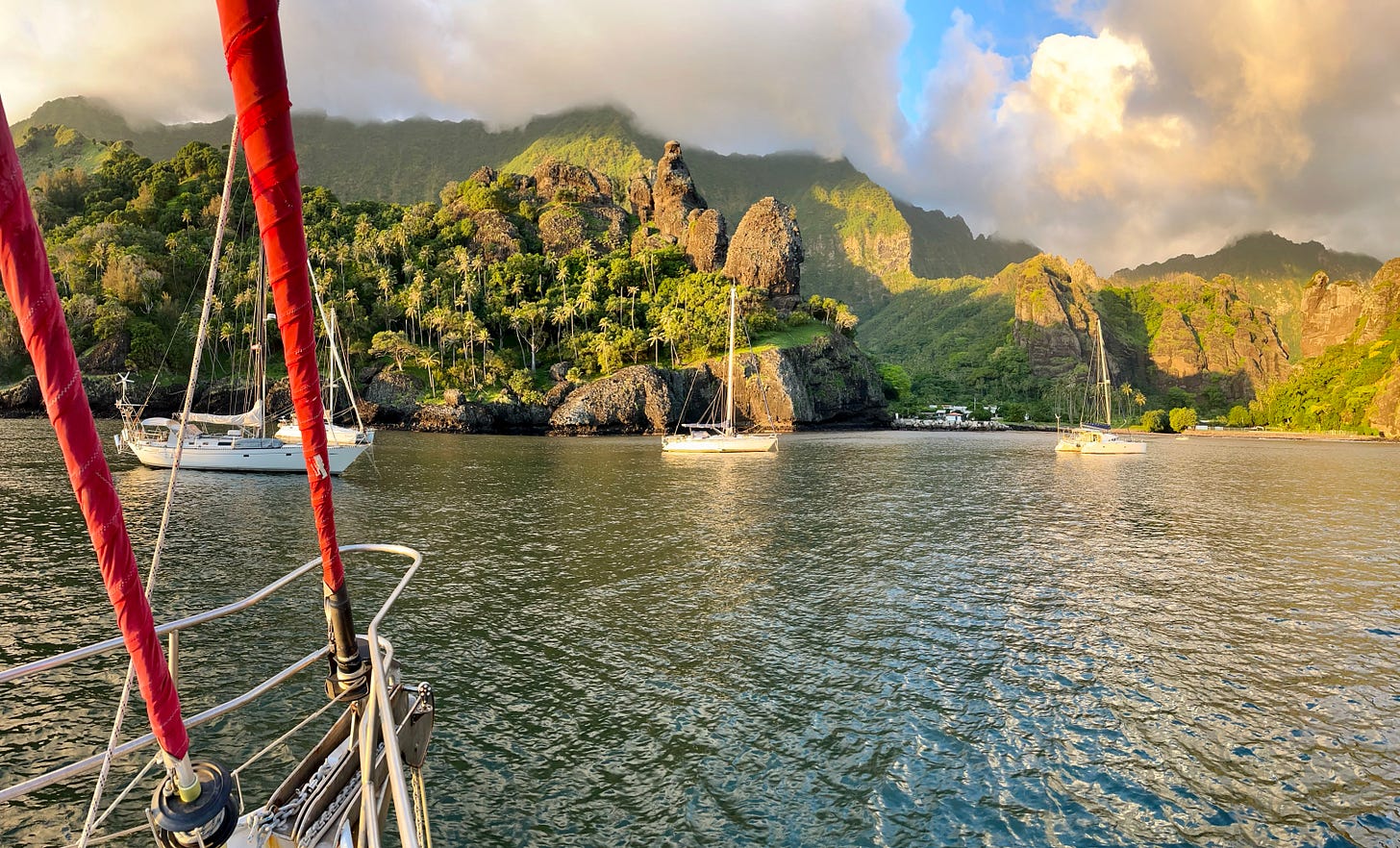
We sailed 500 miles to the Tuamotus, the most idyllic place on earth and the most terrifying all at once. Each of the dozens of uninhabited coral atolls only accessible by entering a narrow pass through a coral reef, the inside of which are all studded with thousands of coral heads, or bommies, made of solid rock shooting up from the sea floor to within inches of the surface. In Raroia we smashed into one at full speed and thought we were sinking. At 4:30 the next morning I was the first responder to a mayday call from another sailor who smashed into the reef after falling asleep at the helm. But it was there in Raroia that we met our future lifelong friends. This happens, these things happen, when you least expect them. Two days after hitting the bommie, just next to the small group of palms where the crew from Kon Tiki became shipwrecked after drifting across the Pacific Ocean from Peru, we met Gavin and José from the catamaran Orea along with their two young ladies, Maika and Indi. They had caught some coconut crabs and I shared some tips on how to prepare them for cooking—my specialty from years of catching and preparing Seattle’s Dungeness variety. The boys would forge a wonderful relationship with the girls and Sheena and I would become fast friends with their parents, which would set off a five month buddy boat pairing that would last through the rest of the season and which would result in the pickling of our livers through the consumption of uncountable nightly Negronis and rums and coke and the sealing of a lifelong bond of friendship.

Swimming with sharks went from fear to novelty to normal. “Boys, please stop splashing like that, I feel that’s a few too many sharks you’ve attracted.” We became irreversibly tan, our freezers became packed with tuna, mahi-mahi and wahoo, and the boys became independent, fearless, confident, funny, and kind. Well educated too on account of Mrs. Sheena’s Boat School and science and engineering classes with Dad.

Early on I had confided in our friends Mike and LJ that I wondered if this was actually fun, but that feeling soon came to pass—though not without enduring some very dark times. Chief among them was the unforecasted storm on June 8th while anchored in the atoll of Tahanea. Just as the sun came up a squash zone formed over us, bringing 55-knot winds and 6-foot waves to where we were anchored. I spent the entire day, from 6am until 3pm in my underwear glued to the helm wearing a snorkeling mask so that I could open my eyes in the hurricane-force wind and driving rain, motoring the boat into our anchor to keep us off the reef while Sheena yelled instructions over the screaming wind. At the end of the day we had dragged our anchor a quarter of a mile anyway, smashing into another boat in the process. We destroyed our solar panels, lost our dinghy, lost most of the things that had been on deck, and wound up just two boat lengths off the reef. A boat a few miles away wasn’t so lucky. Months of PTSD ensued. But we made it through, went to Tonga, went to Fiji despite the nightly nightmares.
Each new island chain meant a long passage, and the passages ranged from daunting to incredibly pleasant. The 300 miles from Fakarava to Tahiti was the worst, during which we were overtaken by a storm of 12-foot waves and 40-knot winds that lasted 24 hours. It scared me. But when we sailed from Bora Bora to Fiji we intended to stop at the Cook Islands. We passed within a few miles of Aitutaki, Palmerston Atoll, and the independent nation of Niue, but we didn’t stop. We had expected to sail as much as 800 miles, stopping along the way, but never bothered to check how far it was to go all the way to Tonga without stopping until after the fact. That’s when I felt like we had become blue water sailors—when we left without knowing how far we had to go, and then made landfall nine days and 1,200 miles later. We were sad when it ended because we were having such a good time. As we rounded the corner into Tonga’s Vava’u group we landed a big eye tuna, which made it all the better. A sushi dinner, a full freezer, and a nice welcome to a new country.
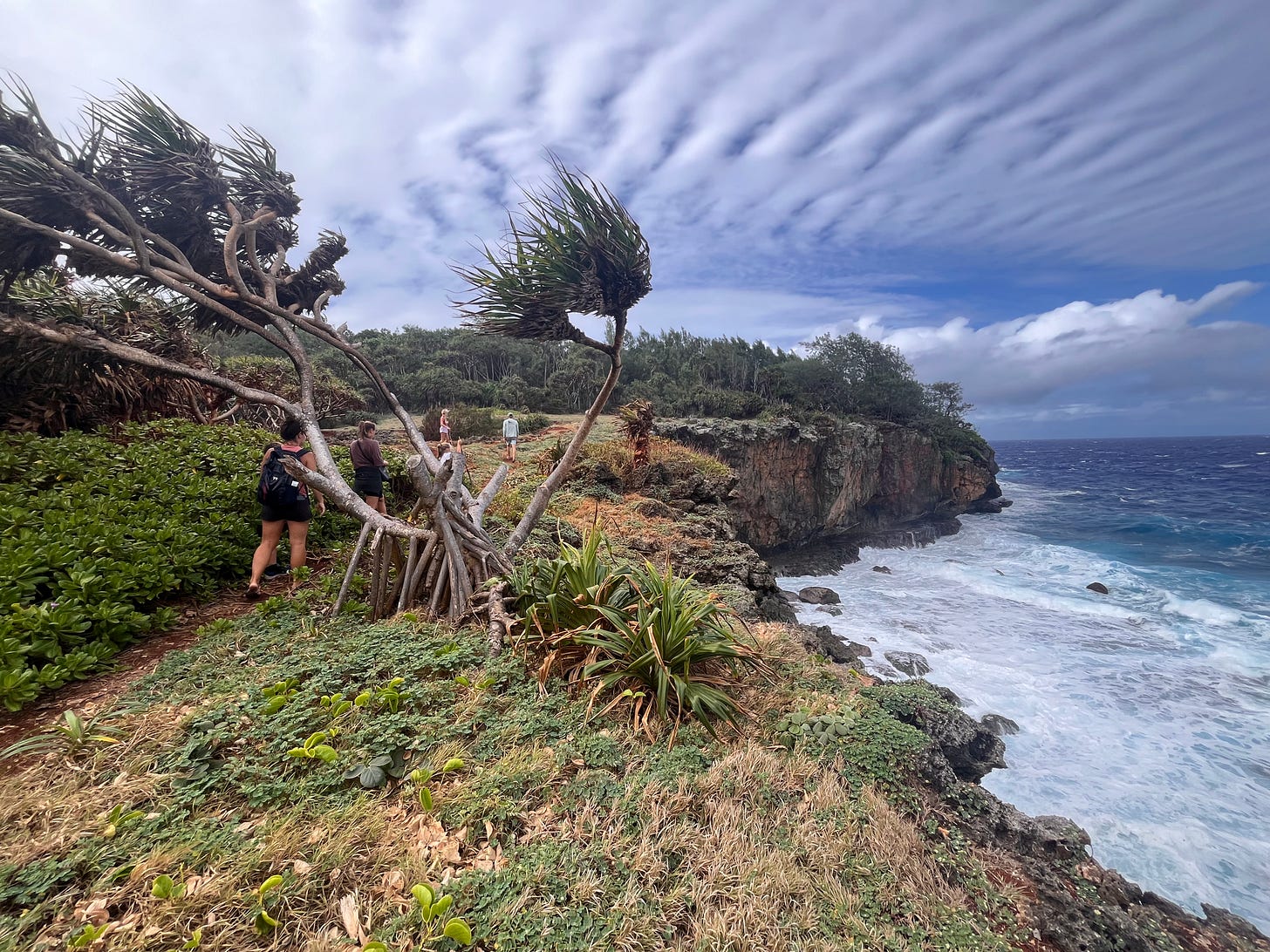
Three weeks later, after discovering that Tonga may be the kindest place on the planet, we were off again, another 900 miles to Fiji, escorted out of the country for the first three hours by a giant whale tucked under our stern as we sailed. And then we had sailed from Seattle to Fiji. Chandler Bing would be proud. I ate goat curry for every meal for the first week in Savusavu (Kunal’s Wine and Dine has the best, if you must know). Remy celebrated his 9th birthday at the Big Bula Waterpark in Denarau, as promised more than a year ago. He said it was the best day of his life, narrowly bumping the weekend spent at the Santa Cruz boardwalk amusement park. A win for Sheena and me. We were accompanied by so many good friends we’d made along the way. Remy was surrounded by people his age with whom he had forged meaningful relationships in the real world on beaches and around bonfires and drinking from coconuts and swimming with sharks.
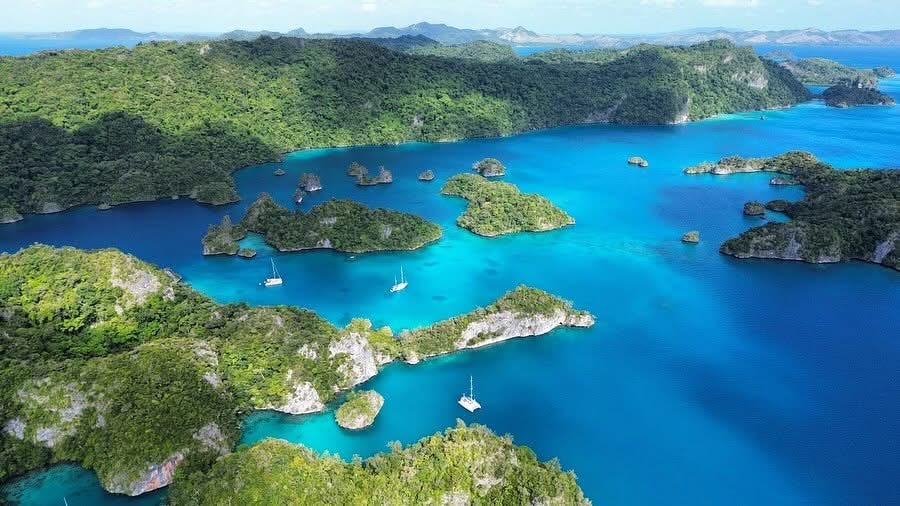
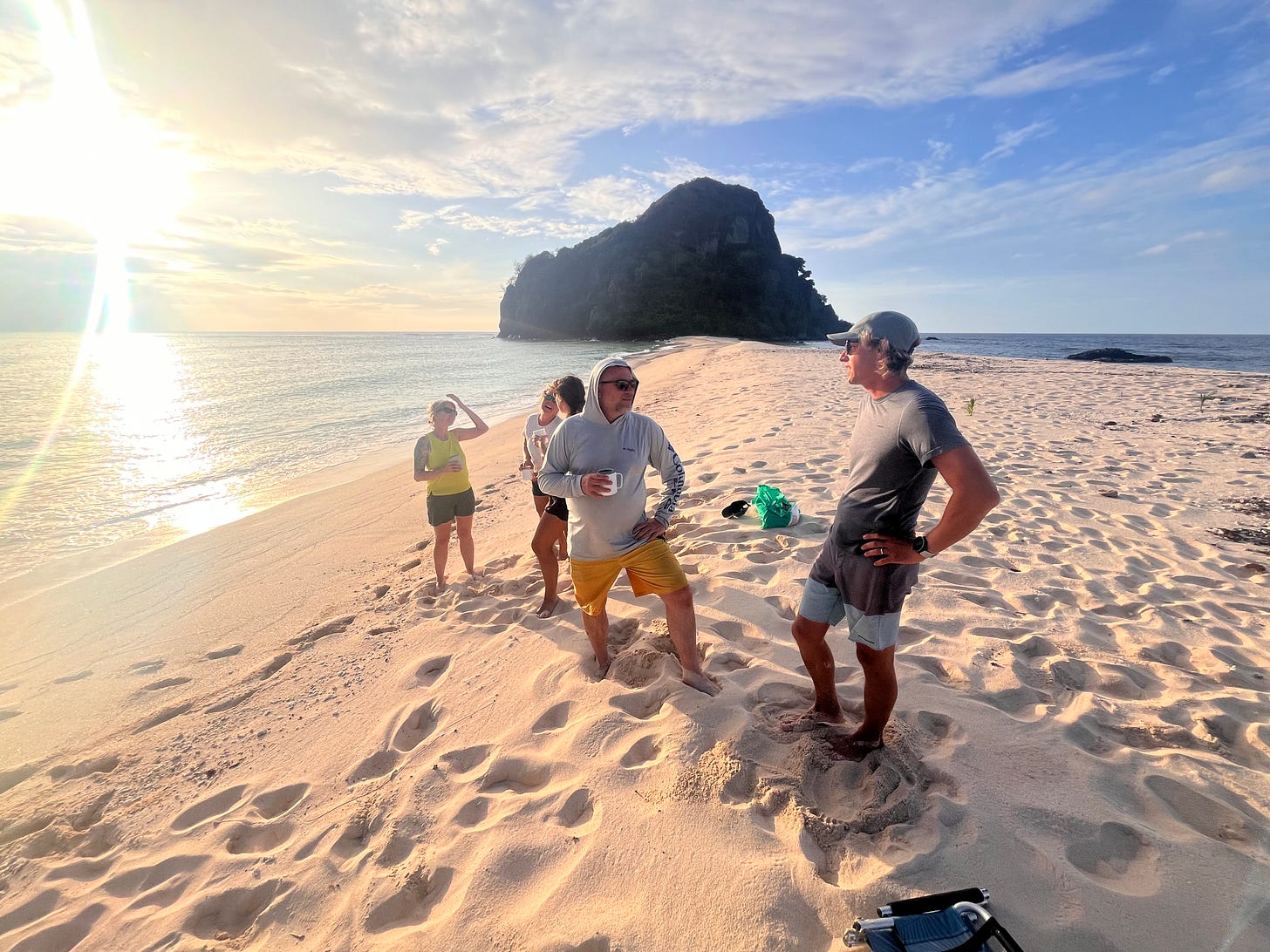
We left Fiji in November and sailed 1,100 miles south—finally south instead of west—to New Zealand. New Zealand. We sailed from Seattle to New Zealand, and we’re not even real sailors. We bought this boat never having set foot on a sailboat before. Neither of us has ever taken a sailing course, we have no credentials aside from getting out and trying. But in the last year we’ve put down something like 10,000 nautical miles and now we’re in New Zealand. As my old friend Dr. Seuss used to always say: Oh! The places you’ll go! But we’re just getting started, so, as my other old friend Scott Galloway always likes to say: GO! GO! GO!


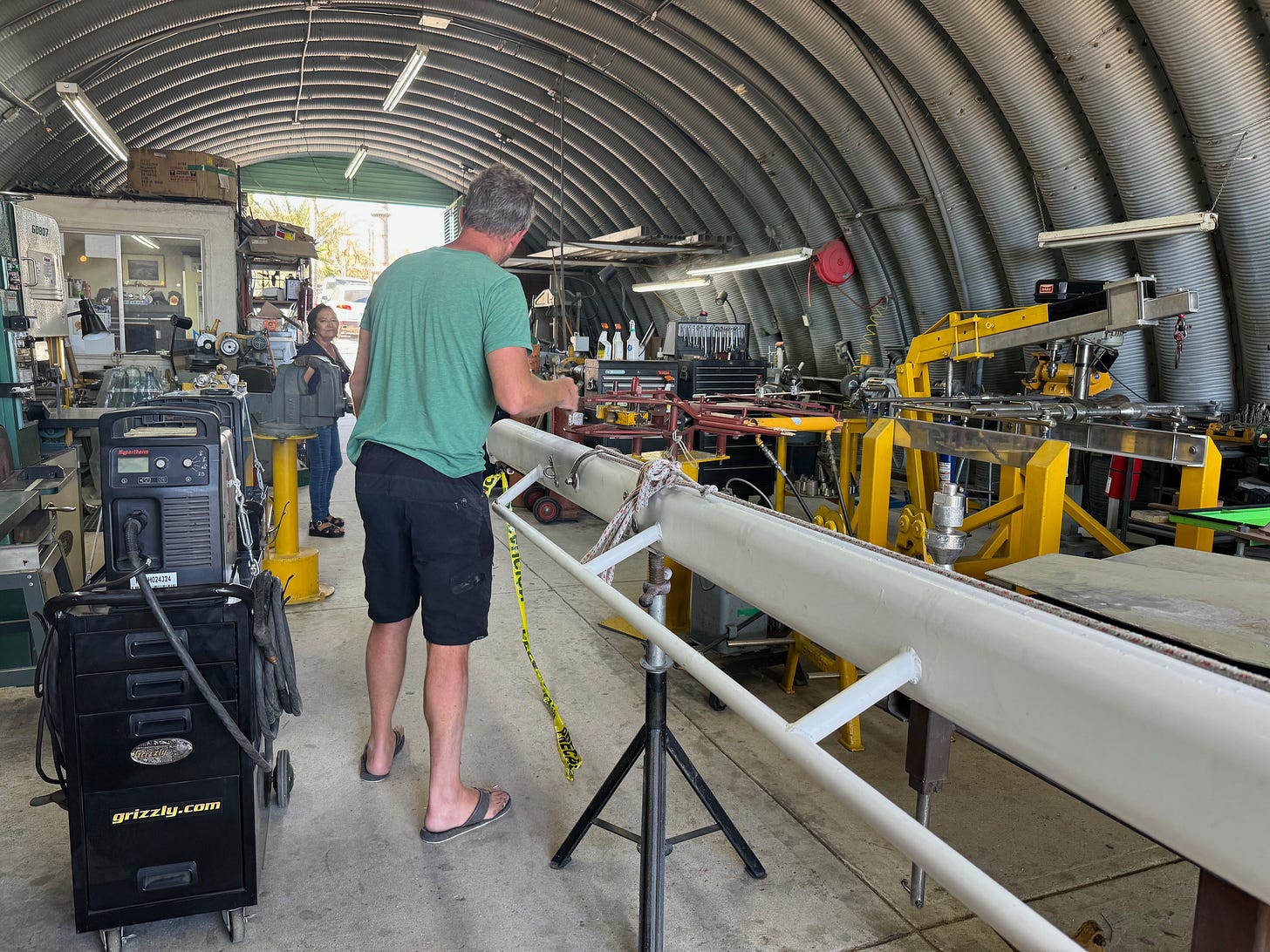





I had to read this to my husband, Bob. Sipping coffee, waiting for spring to come and boats to go in the water, your story left us breathless. You MUST compile your adventure into a book.
Please schedule a trip to Taiwan so my family and I can show you around our island.